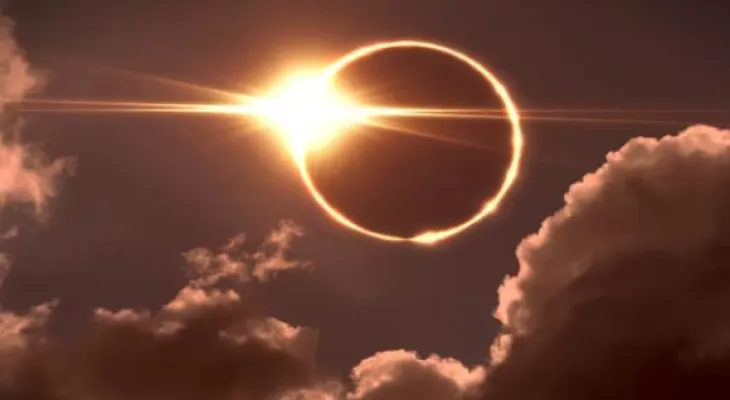Search here
Newspaper
Search here

Arab Canada News
News

Published: April 8, 2024
North America will witness today, Monday, a total solar eclipse for the first time in seven years, a rare celestial phenomenon that will not occur again for another two decades. The moon will slide in front of the sun, briefly plunging parts of the Earth beneath into pitch darkness.
The show will begin over the South Pacific. As long as the clouds persist, people in southern Mexico will be the first to see the eclipse from the shore around 11 a.m. Eastern Time. The darkness will then move to the United States, starting from Texas, then continuing northeast before ending just off the coast of Newfoundland after 5:15 p.m. EST.
In Canada, the path of the total eclipse — the stretch where the moon will completely block the sunlight — includes parts of Ontario, Quebec, New Brunswick, Nova Scotia, Prince Edward Island, and Newfoundland. People outside the total path will witness a partial solar eclipse, with the moon covering only part of the sun.
What does a total solar eclipse look like?
A total solar eclipse occurs when the moon passes between the sun and the Earth, completely obscuring the sun’s face. People watching from the path of totality will experience what is called a total solar eclipse. The sky will become as dark as if it were dawn or dusk. If weather conditions allow, people along the path of totality will see the sun’s corona, a strange white ring usually washed out by the bright sunlight.
Outside the path of totality, the moon will still be moving between the sun and the Earth, but the three will not line up perfectly. Only part of the sun will be covered, giving it a crescent shape.
Why is this eclipse so important?
After Monday, the next total solar eclipse over North America will not occur until August 23, 2044.
Moreover, this event is particularly special because the path of totality passes over densely populated areas in Canada, Mexico, and the United States. (Most solar eclipses happen over the ocean).
This show is also expected to be longer, lasting
about two minutes of darkness in some areas along the total path compared to the last solar eclipse on August 21, 2017.
Yes. It is always dangerous to look at the sun with the naked eye. Space agencies and eye doctors agree that looking at a partial solar eclipse without certified eye protection can cause permanent eye damage. The Canadian Space Agency and NASA have extensive tips to protect your vision.
Eclipse glasses are sold in a variety of stores, either in-person or online, but it is important to check one key feature: your glasses must bear the International Organization for Standardization (ISO) code 12312-2. This code specifies the characteristics that a solar viewer must have to protect your eyes.
Photographers do not recommend looking directly. Just as the vast amount of direct sunlight can damage your eyes, it can damage your camera lens.
If you are really forced to take a picture of the sun, photographers say you should cover the lens with a solar filter.
Comments